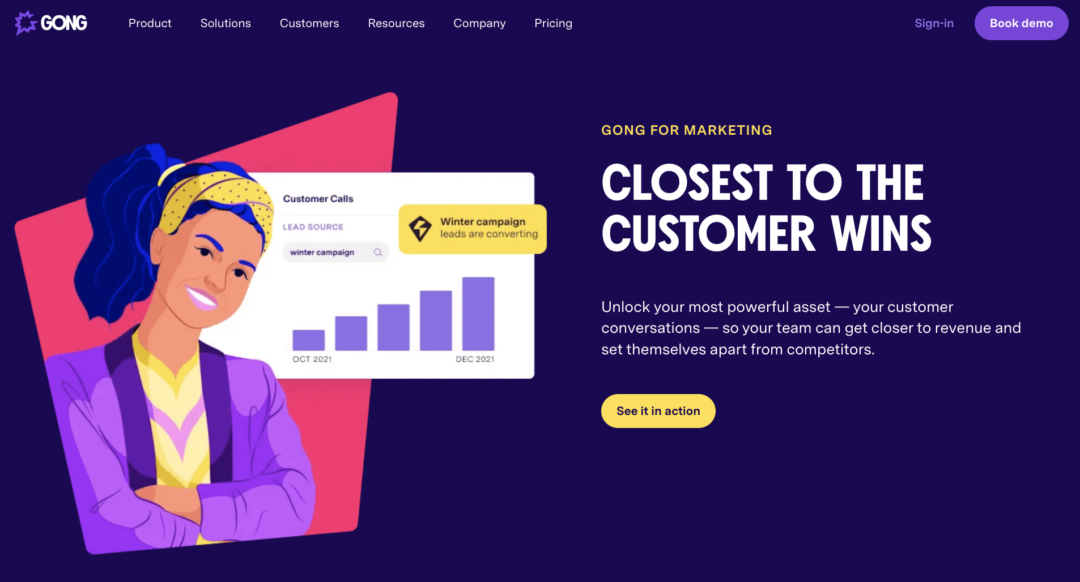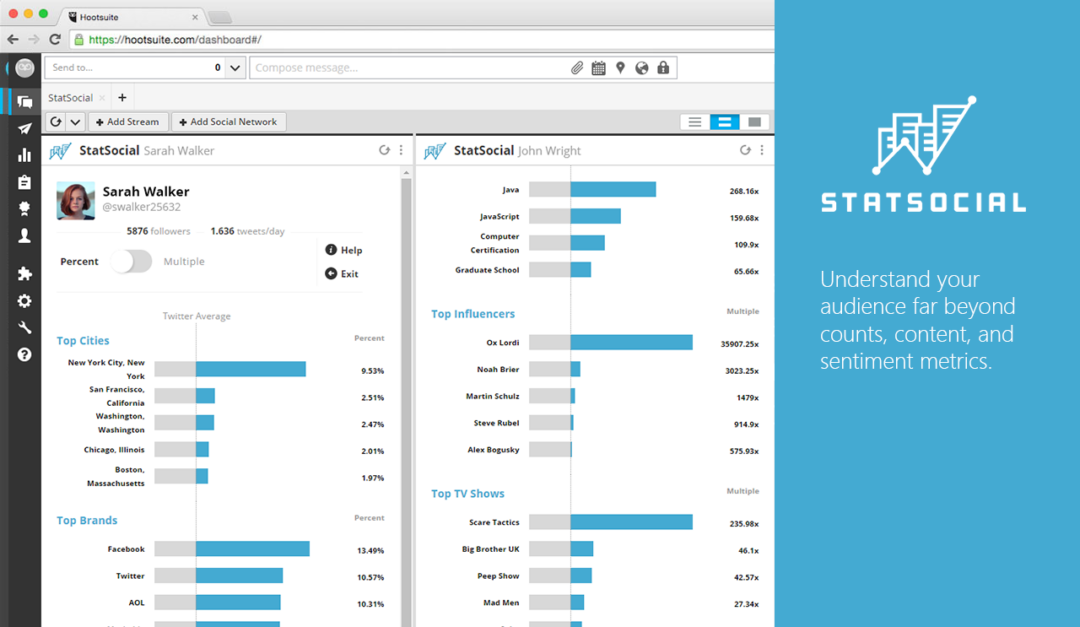Strategy
B2B Research Methods 101: How To Start Reading Customers’ Minds
Customers can surprise you. Are you planning on launching an awesome new product feature? Shoppers might hate the added complexity. Collaborating with an influencer on a March Madness giveaway? You could find yourself in the center of a culture war.
To avoid these common pitfalls that plague brands, you’ll need to add B2B research methods to your marketing toolkit. By uncovering key insights about your customers, you’ll not only understand what makes them tick, but you’ll also discover new opportunities to deliver a better customer experience.
There’s no doubt that companies who know their customers inside and out have a winning advantage. So, use these five B2B research methods to be more like Nike and less like Bud Light.
Why You Can’t Afford to Skip Customer Research
Customer research involves gathering data about your ideal consumers—who they are, what they want, and how you can help them.
The benefits are massive. Companies that conduct research into their customers at least once a quarter grow up to 70% faster and are nearly 50% more profitable than competitors that don’t.
Yet, why do so many companies—from startups to enterprises—skimp on it? It often comes down to three reasons:
- Missing expertise. Analyzing is not easy, so companies without the proper infrastructure or employees with relevant skills may skip it altogether.
- Insufficient buy-in. High-quality customer research can be expensive, which means it can take a lot of work to get executive buy-in. If leadership doesn’t understand the value of it, they may simply see it as an unnecessary expense rather than an investment.
- Lack of resources. Customer research can be a full-time task requiring significant buy-in, especially for enterprise organizations. When resources are limited, the job may fall onto marketers who, as we all know, are already inundated with neverending Slack pings and an infinite to-do list.
But unsurprisingly, not conducting customer research can be more costly in the long term. If you’re implementing ineffective strategies based on guesswork, your new product can end up collecting dust on a shelf or, even worse, in a roundup of the biggest product flops of the year.
5 Types of B2B Research Methods
Customer research doesn’t have to cost hundreds of thousands of dollars. There are a plethora of ways to conduct audience research on a budget—the key is finding a method that aligns with your resources, timeline, and answers you’re hoping to find.
1. Online customer reviews
When you don’t have the resources to conduct one-on-one interviews, mining online customer reviews is a fantastic B2B research method—especially if you’re:
- A company with a tight marketing budget
- Needing to write killer landing page copy
- Hoping to gather unfiltered buyer opinions
For example, instead of writing marketing content from scratch by staring at a blank Google Doc, scouring through online reviews for your and your competitors’ products can reveal the perfect swipeable copy, honest buyer opinions, and why customers choose you.
Let’s say you’re writing social media posts or landing pages for the email marketing platform, ConvertKit. By saving the highlighted text in this review, you now have some ideas to begin crafting your high-converting, hard-hitting relatable messaging:
Where to find online reviews
The key to reaping the benefits of high-quality and reliable online reviews is knowing where to look—these are great starting places:
- Your website or your competitor’s website
- Third-party review sites like G2, TrustRadius, and GetApp
- Social media and niche communities like r/SkincareAddiction or r/nutrition—pro tip: services like GummySearch let you tap into conversations about your brand on Reddit
- Social listening tools like Hootsuite to track brand mentions
2. Surveys
There’s a reason we’re constantly bombarded with “How did we do?” emails after making a purchase or using a service—customer surveys work. In fact, they’re one of the easiest B2B research methods for collecting data at scale, particularly for:
- Companies with a large audience
- Brands seeking easy and cost-effective qualitative research
- Marketers needing answers to specific questions
That said, if you instinctively hit the “delete” button when receiving a survey request, you’re not alone. Consumers have gotten desensitized to these requests, which means it’s more important than ever for brands to nail their survey design by:
- Having a healthy balance of questions. Too many questions and survey takers will bounce. Too few, and you don’t have enough insight.
- Experimenting with the phrasing of questions. Phrase questions in a neutral manner so you don’t sway opinions. For example, you don’t want to include a question like, “Do you think X feature in our product is reducing your stress?” Instead, a better alternative might be, “What do you think of feature X in our product?”
- Avoid double-barreled questions. Ask about only one topic in each question.
3. Internal resources
You might have gold in your backyard without realizing it. Given that sales and customer success teams have direct access to customers, they probably have a goldmine of insight you’re not tapping into, especially when it comes to:
- Getting insight into existing customers
- Quickly finding what clicks the most with buyers
- Finding patterns in what your audience shares
Get started by asking your CS team about the common questions they hear to pinpoint your customers’ pain points, areas of confusion, and potential objections.
Pro tip: Tools like Gong and ChorusAI can help you search for keywords from sales calls. However, because you won’t be able to ask follow-up questions, you’ll want to listen to several calls or analyze many comments, emails, and support tickets to scope patterns.
4. Audience intelligence (AI) tools
AI is all the rage right now, and unsurprisingly, it’s one of the most effective ways to discover what your ideal customers are doing on the web. You can use AI-powered tools to find data around engagement, influences, interests, and more, making them great for:
- Gathering audience insights
- Analyzing a large audience
- Finding who and what influences your target audience
The best part? These tools remove the dissonance between what customers say they do versus what they actually do. Your ideal consumer might tell you they regularly read the New York Times, while in reality, they’ve simply skimmed a couple of articles recently to impress a Hinge match.
New AI tools are popping up every day, but here are the five you can begin with:
- SparkToro: Find out who your ideal customer follows on social channels, which websites they visit most, and what phrases they most frequently use.
- Audiense: Understand your customer segments, their personality and needs, and buying mindsets.
- Brandwatch: Measure customer sentiment, how you stack up to your competitors online, and your brand perception.
- Affogata: Track your industry’s social media trends, real-time customer feedback, and what your competitors are up to.
- StatSocial: Gather social media insights from your followers, a 360-degree view of your potential buyers, and demographic data.
5. Customer interviews
We’ve saved the best for last—the literal version of “Just talk to your customers!” Customer interviews are best for:
- Companies investing heavily in customer research
- Gaining in-depth insight into your customers’ buying journey, motivations, pain points, and more
- Forming a genuine connection with customers
But why should you invest in one-on-one interviews when there are so many other B2B research methods? Not only is it an opportunity to build a closer relationship with customers—but instead of dancing around what they’re clicking on and searching for, you can also hear about their buying motivations, needs, wants, priorities, and more directly, all while being able to ask crucial follow-up questions.
A Treasure Trove of Customer Data Awaits
Taking periodic pulse checks of customer sentiment is the best way to find what you’re doing right and what flaws you should improve upon. The more you know, the more prepared you will be to serve them best—so you can replace those pesky one- or two-star reviews with a flurry of five-star testimonials.
Stay informed on the latest content trends, industry insights, and news. Subscribe to The Content Strategist to receive updates.
Image by sorbettoGet better at your job right now.
Read our monthly newsletter to master content marketing. It’s made for marketers, creators, and everyone in between.








